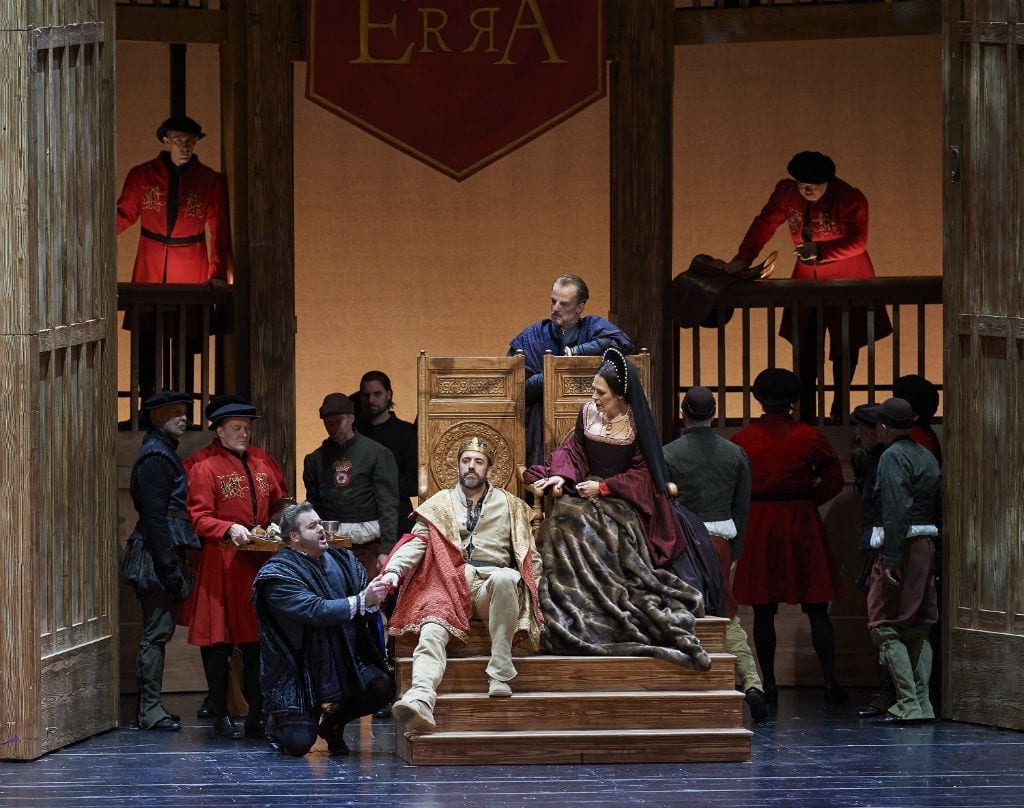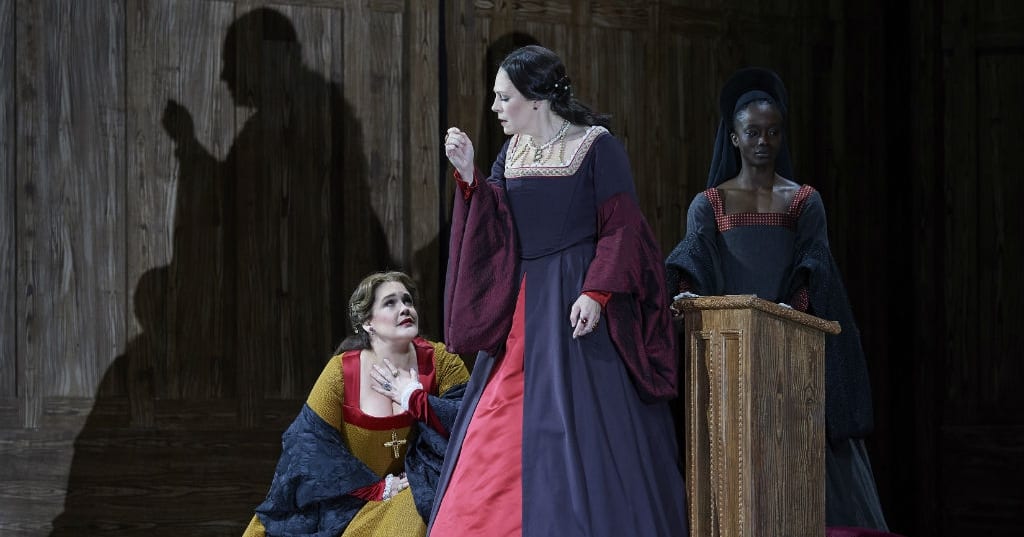The COC wraps up Donizetti’s Tudor trilogy with a new production of Anna Bolena, the tragic bel canto opera based loosely on the life of Anne Boleyn. If you love that classic bel canto sound and want to experience the force of nature that is Sondra Radvanovsky in the title role of Anna Bolena, then this production is for you. Radvanodsky and the entire cast thankfully save this opera from the tedious production choices made by Stephen Lawless and his team.
In his program notes, Lawless reminds us that the overall approach to the Donizetti Tudor trilogy attempts to “construct a dialogue between the historical and the fictional, dramatizing the latter and trying to relate to the former.” But Lawless’s approach, when translated to the stage is unmitigatingly grim as if to suggest that the Tudors must have been a dour bunch indeed. The towering but unstable wooden sets, which are meant to invoke Shakespeare’s Globe, hem the singers in, and due to their instability, also tend to shake somewhat distractingly whenever some of the more robust performers lean against them. The costume and set design choices are unfortunate and do little to satisfy the kind of historical dialogue that Lawless claims to be constructing, especially for any audience member conversant with the conventions of Tudor or Elizabethan theatre and spectacle.
Unfortunately, tonight’s production was also the sloppiest in terms of stage management that I’ve ever seen at the COC. In the first act, a light directed at a glass pane on stage shone directly into the eyes of the entire section I was sitting in, prompting many audience members to shift uncomfortably, trying to get out of its glare in order to enjoy the performance. At one point, a stagehand in jeans and t-shirt (not exactly Tudor garb) was quite visibly manipulating the wooden sets while performers were on stage and the orchestra playing.
After the precision of Lepage’s The Nightingale and Other Short Fables, which runs in tandem with Anna Bolena at the Four Seasons, one wonders what on earth happened to all that professionalism and vision.

What saves this production is its cast. Sondra Radvanovsky, as Anna Bolena, reminds us once again why she reigns supreme as the queen of bel canto. Radvanovsky can drown an entire orchestra with the force of her voice, her intonation is impeccable, and her dramatic presence peerless. She is also capable of using that power to phrase these well-worn melodies in ways that are unexpected. For example, in the duet she sings with Giovanna Seymour on discovering Enrico’s treachery, both Bolena and Seymour hit the same note, but Radvanovsky swells that note, engulfing her rival with the full fury and pathos of her betrayal. It was a moment of rare musicality that could only be accomplished through phenomenal talent and capacity. Other notable performances were Christian Van Horn stepping in as the lecherous Enrico, and Allyson McHardy in the pants role as Smeton.
Corrado Rovaris’s musical direction was perfectly able — this was the tried and tested method for Donizetti, and thus the evening provided a serviceable introduction to one of the great bel canto operas of the 19th century. However, if you’re looking for that synergetic confluence of great music, theatre, and art, this production of Donizetti’s Anna Bolena will leave you unmoved.

